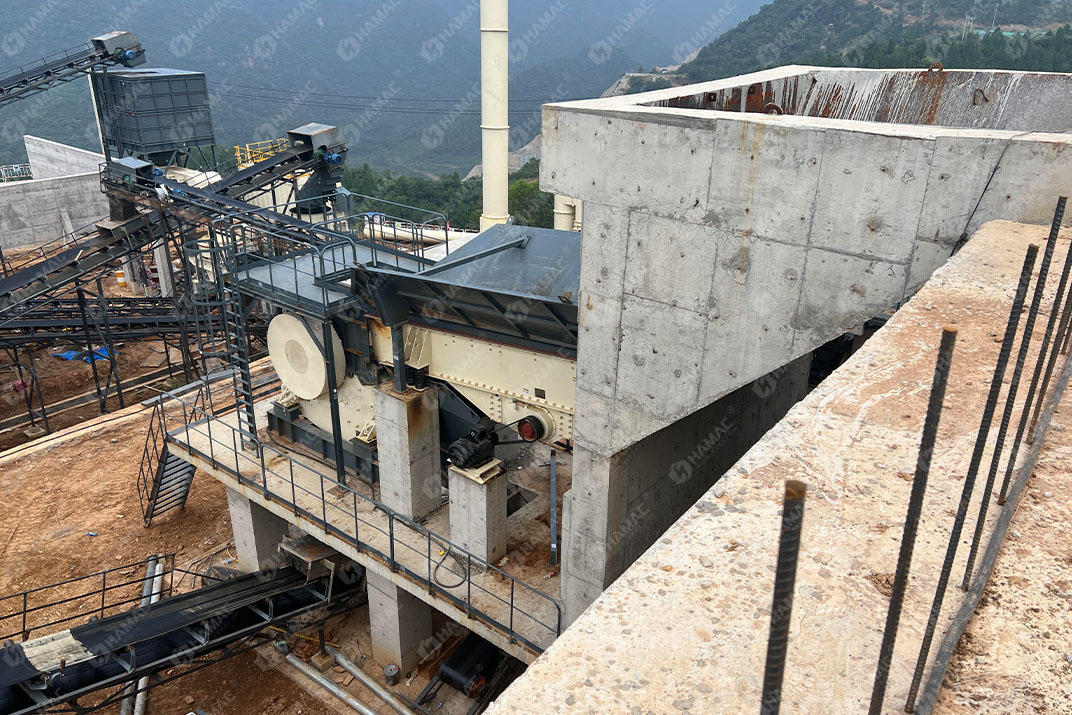Operating stone crushing equipment inherently involves risks. Whether it’s a limestone crusher or a general-purpose stone crusher, these powerful machines endure constant wear and tear. To ensure safe and efficient operation, the first step is to regularly inspect and maintain the vulnerable parts. Neglecting these key components often leads to accidents, costly downtime, and expensive repairs. This article highlights the critical parts you need to monitor to keep your stone crushing equipment running smoothly and safely.
Identifying Vulnerable Parts in Stone Crushing Equipment
Stone crushing equipment is a complex system with many moving parts working together to crush raw materials into aggregates. These machines often operate in harsh conditions, which accelerate wear on certain components. Whether it’s a limestone crusher or a general stone crusher, regular inspections of all parts are essential to prevent potential safety hazards and downtime.
While many components require attention, certain vulnerable areas deserve special focus:
1. Crushing Chamber
The crushing chamber is the heart of any stone crusher. This is where raw materials like limestone enter for crushing. Over time, wear parts inside the chamber—such as liners and hammers—degrade, reducing crusher efficiency and safety. Damage here can cause blockages or catastrophic failures, posing serious safety risks.
Regularly inspect liners and hammers and replace them before excessive wear occurs to avoid costly downtime and maintain smooth crusher operation. For enhanced crushing efficiency, consider integrating advanced screening solutions like the NG Screen by Hamacchina.
2. Feeders and Conveyors
Feeders and conveyors ensure a steady, safe supply of raw materials to the crusher. Over time, misalignment or blockages may occur, causing uneven feeding and potential mechanical failures.
Checking feeder wear and maintaining proper conveyor belt tension are critical safety steps. Also, inspect motors driving feeders and conveyors to prevent unexpected breakdowns and production interruptions. Upgrading your feeding system with components compatible with technologies such as the Hamacchina NG Screen can optimize throughput.
3. Bearings and Shafts
Bearings and shafts are key moving parts that transfer mechanical power from motors to crushers. Continuous motion and heavy loads cause bearings and shafts to wear and overheat, potentially leading to serious damage if not properly maintained.
Lubricate bearings regularly and monitor for overheating or unusual noises. Replace worn bearings promptly to maintain plant safety and operational efficiency.
4. Electrical Systems and Control Panels
The plant’s electrical system controls everything from motors to safety devices. Electrical failures can lead to serious risks, including equipment breakdowns and fire hazards.
Regularly inspect wiring, control panels, and circuit breakers for wear, damage, or loose connections. Ensuring the electrical system operates reliably reduces the risk of downtime and dangerous incidents. Implementing control solutions that integrate with equipment like the NG Screen from Hamacchina can improve system reliability.
5. Dust Collection and Ventilation Systems
Stone crushing plants generate large amounts of dust, posing serious health risks to workers. Well-maintained dust collection and ventilation systems are vital to ensure operator safety. Blocked or inefficient dust systems can create hazardous conditions and even fire risks.
Regularly clean filters and verify dust collection efficiency. Proper ventilation keeps the work environment safe and healthy.
Best Maintenance Practices for Safe Operation
Consistent maintenance of vulnerable parts is crucial to safe stone crushing equipment operation. Key maintenance steps include:
-
Regular Inspections: Conduct thorough inspections of critical parts like crushing chambers, feeders, and electrical systems. These should be performed by trained professionals familiar with crushing equipment and safety risks.
-
Preventive Maintenance: Implement preventive maintenance schedules to address issues before they escalate. Replacing worn liners, belts, and other parts proactively prevents unexpected failures and downtime.
-
Operator Training: Properly train operators to recognize potential risks and early signs of faults. Familiarity with safety protocols and routine checks helps identify problems before they become serious.
Conclusion
The first step toward safe operation of stone crushing equipment is regular inspection and maintenance of vulnerable parts. By focusing on critical components such as crushing chambers, feeders, bearings, electrical systems, and dust collection, you can prevent accidents and costly downtime. With routine checks and preventive maintenance, limestone crushers and other stone crushing machines can operate efficiently and safely, minimizing risks to workers and maximizing productivity.

Comments
No comments yet. Be the first to react!